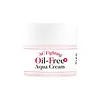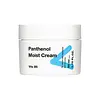What's inside
What's inside
 Key Ingredients
Key Ingredients

No key ingredients
 Benefits
Benefits

 Concerns
Concerns

 Ingredients Side-by-side
Ingredients Side-by-side

Water
Skin ConditioningGlycerin
HumectantButylene Glycol
Humectant1,2-Hexanediol
Skin ConditioningNiacinamide
SmoothingDimethicone/Vinyl Dimethicone Crosspolymer
Skin ConditioningBetaine
HumectantHydroxyethyl Acrylate/Sodium Acryloyldimethyl Taurate Copolymer
Emulsion StabilisingMaltodextrin
AbsorbentArginine
MaskingCarbomer
Emulsion StabilisingPanthenol
Skin ConditioningRibes Nigrum Fruit Extract
AstringentYeast Extract
Skin ConditioningLactobacillus Ferment
Skin ConditioningPolyglyceryl-10 Myristate
Skin ConditioningXanthan Gum
EmulsifyingGlyceryl Acrylate/Acrylic Acid Copolymer
HumectantSodium Citrate
BufferingCitric Acid
BufferingHexylglycerin
HumectantBetaine Salicylate
AntimicrobialGluconolactone
Skin ConditioningCyanocobalamin
Skin ConditioningWater, Glycerin, Butylene Glycol, 1,2-Hexanediol, Niacinamide, Dimethicone/Vinyl Dimethicone Crosspolymer, Betaine, Hydroxyethyl Acrylate/Sodium Acryloyldimethyl Taurate Copolymer, Maltodextrin, Arginine, Carbomer, Panthenol, Ribes Nigrum Fruit Extract, Yeast Extract, Lactobacillus Ferment, Polyglyceryl-10 Myristate, Xanthan Gum, Glyceryl Acrylate/Acrylic Acid Copolymer, Sodium Citrate, Citric Acid, Hexylglycerin, Betaine Salicylate, Gluconolactone, Cyanocobalamin
Water
Skin ConditioningPanthenol 10%
Skin ConditioningButylene Glycol
HumectantHelianthus Annuus Seed Oil
EmollientGlycerin
Humectant1,2-Hexanediol
Skin ConditioningCetearyl Alcohol
EmollientCetearyl Olivate
Sorbitan Olivate
EmulsifyingCaprylic/Capric Triglyceride
MaskingBetaine
HumectantHydroxyethyl Acrylate/Sodium Acryloyldimethyl Taurate Copolymer
Emulsion StabilisingDimethicone
EmollientBeeswax
Emulsion StabilisingEthylhexylglycerin
Skin ConditioningArginine
MaskingCarbomer
Emulsion StabilisingAllantoin
Skin ConditioningXanthan Gum
EmulsifyingCitrus Limon Peel Oil
MaskingWater, Panthenol 10%, Butylene Glycol, Helianthus Annuus Seed Oil, Glycerin, 1,2-Hexanediol, Cetearyl Alcohol, Cetearyl Olivate, Sorbitan Olivate, Caprylic/Capric Triglyceride, Betaine, Hydroxyethyl Acrylate/Sodium Acryloyldimethyl Taurate Copolymer, Dimethicone, Beeswax, Ethylhexylglycerin, Arginine, Carbomer, Allantoin, Xanthan Gum, Citrus Limon Peel Oil
 Reviews
Reviews

Ingredients Explained
These ingredients are found in both products.
Ingredients higher up in an ingredient list are typically present in a larger amount.
1,2-Hexanediol is a synthetic liquid and another multi-functional powerhouse.
It is a:
- Humectant, drawing moisture into the skin
- Emollient, helping to soften skin
- Solvent, dispersing and stabilizing formulas
- Preservative booster, enhancing the antimicrobial activity of other preservatives
Arginine is an amino acid that is important for human development. Your body uses is it to produce hair keratin and skin collagen.
As a cosmetic ingredient, Arginine has antioxidant properties and can also help repair damaged skin. This ingredient is derived either synthetically or from animals.
Arginine isn't fungal acne safe when used in the presence of other lipids (fats, fatty acids, oils, esters, etc). Oils and fats occur naturally within the skin, so take caution when using Arginine if you're prone to fungal acne.
Learn more about ArginineBetaine is a common humectant (a substance that promotes retention of moisture). It's known to be gentle on the skin and can help balance hydration.
This ingredient is best for improving hydration and soothing irritated skin. Studies also show it helps even out skin tone.
Fun fact: Betaine is naturally created in the skin and body. The kind found within cosmetic products can be either plant-derived or synthetic.
Another name for betaine is trimethylglycine.
Learn more about BetaineButylene Glycol (or BG) is used within cosmetic products for a few different reasons:
Overall, Butylene Glycol is a safe and well-rounded ingredient that works well with other ingredients.
Though this ingredient works well with most skin types, some people with sensitive skin may experience a reaction such as allergic rashes, closed comedones, or itchiness.
Learn more about Butylene GlycolCarbomer is a polymer of acrylic acid. Its main role is to create a gel consistency.
A high amount of carbomer can cause pilling or balling up of products. Don't worry, most products contain 1% or less of carbomer.
Glycerin is already naturally found in your skin. It helps moisturize and protect your skin.
A study from 2016 found glycerin to be more effective as a humectant than AHAs and hyaluronic acid.
As a humectant, it helps the skin stay hydrated by pulling moisture to your skin. The low molecular weight of glycerin allows it to pull moisture into the deeper layers of your skin.
Hydrated skin improves your skin barrier; Your skin barrier helps protect against irritants and bacteria.
Glycerin has also been found to have antimicrobial and antiviral properties. Due to these properties, glycerin is often used in wound and burn treatments.
In cosmetics, glycerin is usually derived from plants such as soybean or palm. However, it can also be sourced from animals, such as tallow or animal fat.
This ingredient is organic, colorless, odorless, and non-toxic.
Glycerin is the name for this ingredient in American English. British English uses Glycerol/Glycerine.
Learn more about GlycerinThis is a synthetic polymer. It helps improve the texture of products by adding thickness and gel-like feel.
It is also an emulsifer, meaning it prevents ingredients such as oil and water from separating. It also helps evenly disperse other ingredients.
Panthenol is a common ingredient that helps hydrate and soothe the skin. It is found naturally in our skin and hair.
There are two forms of panthenol: D and L.
D-panthenol is also known as dexpanthenol. Most cosmetics use dexpanthenol or a mixture of D and L-panthenol.
Panthenol is famous due to its ability to go deeper into the skin's layers. Using this ingredient has numerous pros (and no cons):
Like hyaluronic acid, panthenol is a humectant. Humectants are able to bind and hold large amounts of water to keep skin hydrated.
This ingredient works well for wound healing. It works by increasing tissue in the wound and helps close open wounds.
Once oxidized, panthenol converts to pantothenic acid. Panthothenic acid is found in all living cells.
This ingredient is also referred to as pro-vitamin B5.
Learn more about PanthenolWater. It's the most common cosmetic ingredient of all. You'll usually see it at the top of ingredient lists, meaning that it makes up the largest part of the product.
So why is it so popular? Water most often acts as a solvent - this means that it helps dissolve other ingredients into the formulation.
You'll also recognize water as that liquid we all need to stay alive. If you see this, drink a glass of water. Stay hydrated!
Learn more about WaterXanthan gum is used as a stabilizer and thickener within cosmetic products. It helps give products a sticky, thick feeling - preventing them from being too runny.
On the technical side of things, xanthan gum is a polysaccharide - a combination consisting of multiple sugar molecules bonded together.
Xanthan gum is a pretty common and great ingredient. It is a natural, non-toxic, non-irritating ingredient that is also commonly used in food products.
Learn more about Xanthan Gum